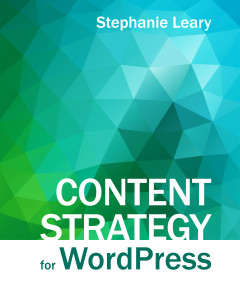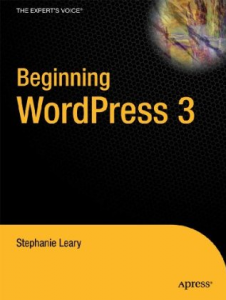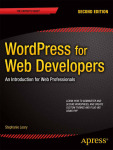This is a post about rereading the Outlander books before the TV show aired. If you’re wondering who “Leary” (Laoghaire) is on the show, this should help.
The upcoming Outlander TV series has prompted me to reread the first few books for the first time in many years. I have a very different perspective on them than I did when I first read them when I was twenty. There were four out at the time, and I read them all — several thousand pages in one big whoosh — over about a week. I loved them. I reread them obsessively.
And then the fifth and sixth books, when they finally came out, were really bad. So I walked away from the series for a while, and have only recently come back to it.
Outlander is in many ways rougher than I remembered, and yet it hasn’t lost any of its emotional heft. The plot is occasionally ridiculous. It’s melodramatic in the extreme. But good God, just try putting it down after the halfway mark; I dare you.
I think the wacky combination of fantasy with otherwise real-world historical fiction works better once you’ve heard Gabaldon describe how she began writing the book as a practice novel, not intended for publication:
All I had when I began writing the first book was rather vague images conjured up by the notion of a man in a kilt, so essentially I began with Jamie, although I had no idea what his name was at the time. About the third day of writing, I had gone to the library to look up things on Scotland—knowing nothing about Scotland in the 18th century—and all I knew about novels at that point was that they should have conflict. And was there any good historical conflict in Scotland in the 18th century? You don’t ask that question without getting back Bonnie Prince Charlie [Charles Edward, Stuart] and the [Jacobite] rising of 1745 as an answer. A lot of conflict—fine! So now I need a female character to play off all these men in kilts. And some sexual tension—that would be good. So I introduced this English woman—no idea who she was or how she got there, but I loosed her into a cottage of Scotsmen to see what she’d do. And she walked in, and they all turned around and stared at her. And one of them said, “My name is Dougal MacKenzie. Who might you be?” And without stopping to think, I typed, “My name is Claire Elizabeth Beauchamp, and who the hell are you?” And I said, “Well, you don’t sound at all like an 18th-century person. So I fought with her for several pages, trying to beat her into shape, make her talk like a historical person. But she kept making smart-ass modern remarks, and she took over telling the story herself. So I said, “Go ahead and be modern. I’ll figure out how you got there later.”
Time travel, of course, being the obvious solution to the problem. Which is why the opening of the book, in the “present” 1945, is relatively dull. It’s just there to tell us that Claire is married, that she was a combat nurse, and that she fell through a crack in a stone circle. Gabaldon, being Gabaldon, takes several chapters to do all that.
One of the first things I noticed, given that the first few chapters are pretty slow, is the number of historical errors that I didn’t spot when I was younger, like rationing ending at the same time as the war in 1945. (Sugar was rationed until 1953.) I’ve read lots of grumbling about the 1945 setting over the years. I gather Gabaldon was less careful about the WWII-era research than the eighteenth century stuff, which is understandable when you a) didn’t intend to write a time-travel frame story for your historical epic to begin with, and b) didn’t intend anyone else to read the book anyway — but this stuff should have been caught prior to publication nonetheless. Even today, that era is within living memory; in 1991 it was very much the sort of thing you could ask someone’s parents or grandparents about.
Outlander really has three things going for it: a smart, competent protagonist; a super-hot dude in a kilt; and lots of conflict. Claire is surrounded by people who, inadvertently or deliberately, keep her from getting where she needs to go. Gabaldon is relentless about heaping more trouble on her — to an absurd degree, at times; the sequence outside Wentworth near the end really goes over the top.
Charles Stross has written about the problem of time tourism for people who are not white men (in Western literature, at least). Given that our protagonist is a woman traveling to the eighteenth century, it’s perhaps not surprising that the whole series is chock full of rape, attempted rape, and the threat of rape. On the other hand, men in this series are victimized as well as women, which makes for a nice change of pace, generally speaking. In later books, the number of characters who are raped eventually becomes absurd — if on-page rape descriptions trigger you, you should give this whole series a pass. But the characters’ post-trauma reactions are consistent and unflinchingly described, and I didn’t feel like things had gotten out of hand until the sixth book.
So, do I recommend reading Outlander? Well, now that the first episode of the TV series is available for free, I’d suggest watching it first to see if you like it. It does a much better job of handling the setup, and you can probably watch it in less time than it would take you to read the equivalent section of the book. If the first episode grabs you, then you can dive into the remaining 800-odd pages.
As for the rest of the books…
I’d forgotten what a punch in the gut Dragonfly in Amber‘s opening chapter is. It’s as if writing a bad frame story taught Gabaldon how to do a good one, because this is stunningly effective. The tension of knowing that it’s all going to go wrong propels the reader through what would otherwise have been a fairly dull introduction to court politics. Nothing else about this book is dull, though. I’d forgotten how Claire’s feud with the Comte got started; how little time we actually spend at the Hôpital; how often Fergus gets everyone into trouble; how, halfway through, you’re suddenly punched in the gut again and have no idea how [spoiler] arrived on Roger’s doorstep with Claire in that first chapter.
The first two books are amazing at managing the characters’ goals versus the reader’s expectations. In the first half of Outlander, Claire’s goal is obvious. Halfway through, she changes her mind because she’s found a better goal — and we think we know where this series is going now. Then, as Dragonfly in Amber opens, we find out that she has achieved the original goal — but now we know that’s the worst thing that could have happened! We must know how she got there, and why. It’s absolutely masterful. Don’t start reading Dragonfly in Amber after dark if you intend to show up at work the next day; you’ll never make it.
Voyager is, strangely enough, my comfort read. There’s not much comfort to be had in the first half of this book, but I love the historical sleuthing, and the way Gabaldon gives us relatively tiny but richly evocative slices of life in the interim. (Although one wonders, by this time, whether Roger is ever going to get back to his job at Oxford.) I think the thing I love most, aside from the hilariously eventful reunion, is that Gabaldon finally opens up the series to other points of view here, for more than just a framing chapter here and there. It’s a little awkward to alternate first-person chapters with third-person, but who cares? The narrative voice finally matches the epic scope of the story. The plot is, again, melodramatic to the point of ridicule. Is it really necessary to include pirates, a plague, and a hurricane? I love that Gabaldon addresses this in the text, though, with Joe’s choice of reading material.
Drums of Autumn starts to slow things down. For my money, it’s largely Roger’s and Brianna’s story with some early American slice of life interludes thrown in, most of which just happen to be told from Jamie’s and Claire’s points of view. There are some really lovely moments: John’s visit and the fishing trip with William; Ian and his dog; Yorick’s skull. But really, the are a lot of boring bits here, and a lot of tangents that don’t lead anywhere.
The Fiery Cross is the book I threw across the room. The pacing is atrocious. One of the series’ strengths is the wealth of texture given to the daily minutiae of eighteenth-century living, but here the author got bogged down in detail. The first ten or twelve chapters cover a single day, and that day ends in anticlimax. The rest of the book was ruined for me on the first read by an unusually spoilery excerpt the author had posted online years before the book came out. (The emergency tracheotomy, for those who’ve read it.) Twelve years later, I can finally reread that section without bitterness, but that doesn’t help much. The book is just unbearably slow. This is also the only volume (so far) that doesn’t include any scenes in the modern world, and it’s the only one since the first that doesn’t interweave bits from the present into the main narrative of the past. This volume makes it apparent how crucial those interludes were; without them; there’s nothing to break the tedium.
A Breath of Snow and Ashes is the worst book in this entire series. I’m not even going to qualify that remark with “I think” or “might be;” it is, and I will brook no argument on this point. The pace drags just as badly as The Fiery Cross; one of the few remaining narrators who hadn’t yet been raped gets raped; characters act uncharacteristically; the bits set in the modern timeline do little to advance the story. Wheels spin; everything is awful.
An Echo in the Bone is much, much better than the previous two volumes. The pacing is still slow, but the story is gaining momentum again — we’re getting close to the beginning of the American Revolution now, and the change of setting puts us right in the middle of it. The younger characters move toward the center of the stage, while the original characters get to show off the experience and competence they’ve gained over the course of the series. We get some awesome new people to care about. (Rachel and Denny!) Seven books in, with a cast of thousands, that’s no small feat.
Written in My Own Heart’s Blood — ah, now we’re back on track. Everyone is in peril again, but there are wonderful reunions as well. Cliffhangers are resolved. We meet additional time travelers! We get heartbreaking insights into the past. The first several chapters are, as usual, an ever-growing pile of improbable complications, and that went on a bit longer than I would have preferred. Ian’s thread made up for that, I thought, and it was great to have things happening again in the modern timeline.




If you read any of Gabaldon’s interviews, she states that she tried to make the modern part of Outlander take place in 1946, since that would’ve been more realistic in Britain, but it seems that was a change the publisher didn’t except for the American edition. It was changed for the English editions in other countries.